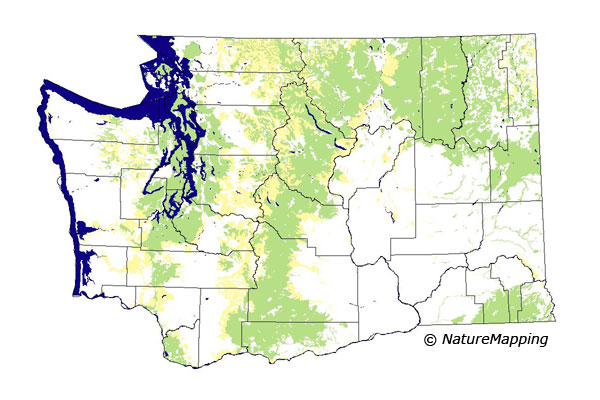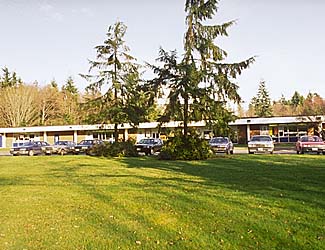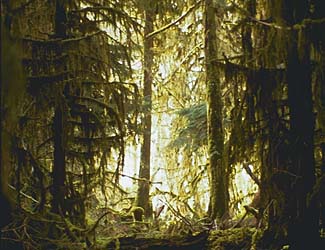GAP Analysis Predicted Distribution Map
Long-toed Salamander (Ambystoma macrodactylum)
Species Code: AMMA
|
Legend:
 = Core Habitat = Core Habitat
 = Marginal Habitat = Marginal Habitat
Metadata
(Data about data or how the map was made)
Predicted Distribution
Amphibians do not migrate as some birds and mammals, so the colored areas depict the predicted range for the Long-toed Salamander year-round. The habitats were identified using 1991 satellite imagery, other datasets and experts throughout the state, as part of the Washington Gap Analysis Project.
Click to enlarge distribution map
|
Distribution and Habitat Requirements
The Long-toed salamander is widely distributed in British Columbia, Idaho, Oregon and Washington,
but not in the driest parts of the Pacific Northwest (Nussbaum et al., 1983). It has also been found on Orcas, Whidbey,
Fidalgo, Camano and Cypress Islands.
In steppe zones, the lizard is confined to wet areas and breeds in shallow pools. In forests, it is most commonly associated
with open meadows or distrubed areas. In the coastal Western Hemlock, Silver Fir and Sitka Spruce zones, it tends to be
restricted to isolated open areas that might have once supported west-side prairies or boggy meadows.
Models
All steppe zones were core except Central Arid Steppe and Canyon Grasslands, which were marginal. All east-side forest zones,
except the Interior Western Hemlock and Interior Redcedar, plus Mountain Hemlock, Olympic Douglas-fir, Puget Sound
Douglas-fir, Woodland Prairie Mosaic, Cowlitz River and Willamette Valley were core. All west-side wet forest zones, plus the
east-side Interior Western Hemlock and Interior Redcedar were marginal. Alpine/Parkland was marginal and the Lava Flow
zones were excluded.
Lakes, marshes, rivers and riparian areas were good habitats in all zones. In core forest zones, low-density
residential and parks, grasslands, shrubland tree savannas and open-canopy forest were considered suitable if available
micro-habitats occurred.
The factor that most determines this species' occurrence in forest appears to be the presence of regular
openings created either by the rugged terrain of high elevations or dryness. According to Nussbaum et al. (1983), it
occurs in agriculture, but the records do not seem to support such use, thus agriculture was excluded.
Translated from the Washington Gap Analysis Amphibians and Reptiles Volume by Karen Dvornich
Webpage designed by Dave Lester

 = Core Habitat
= Core Habitat = Marginal Habitat
= Marginal Habitat
